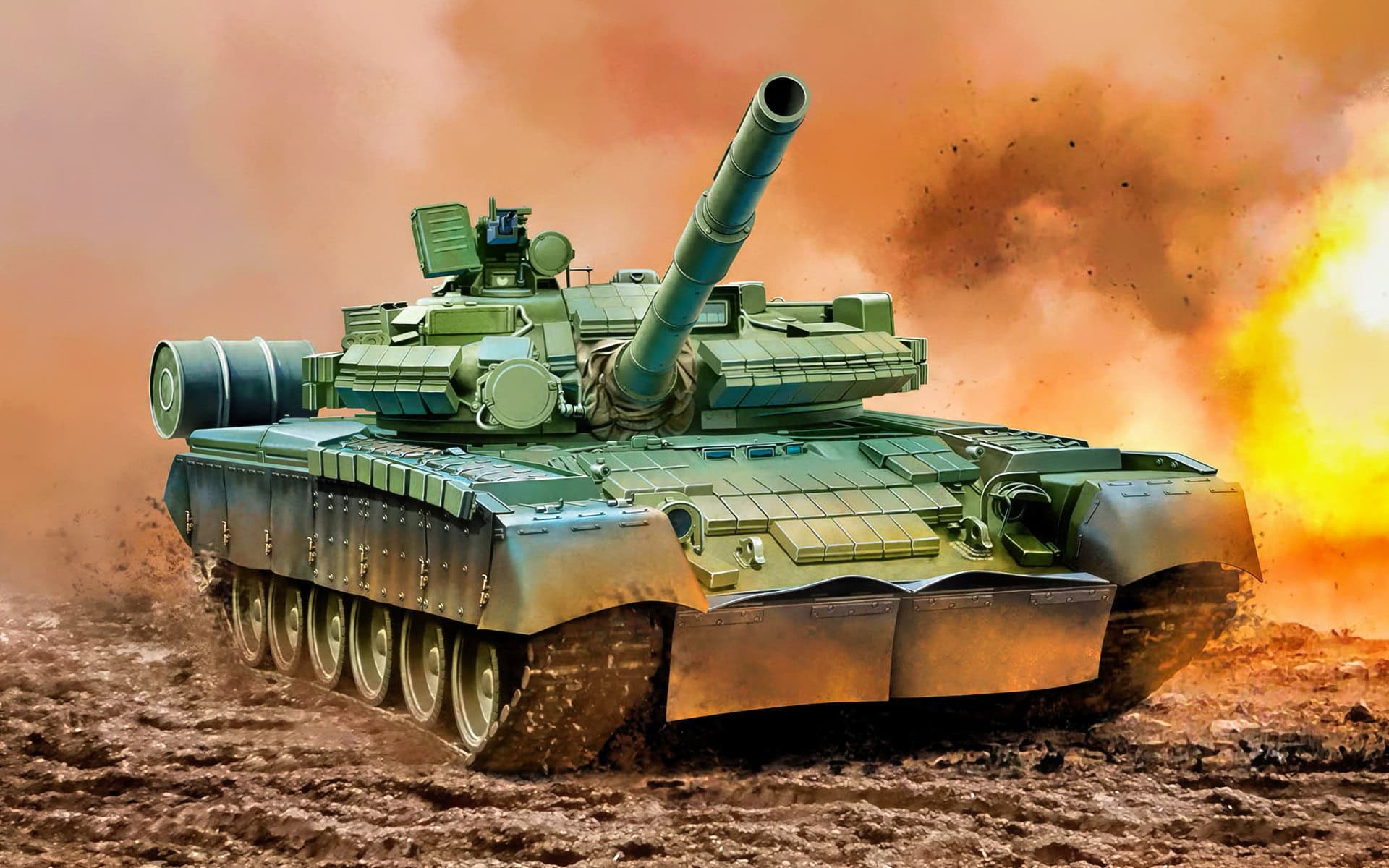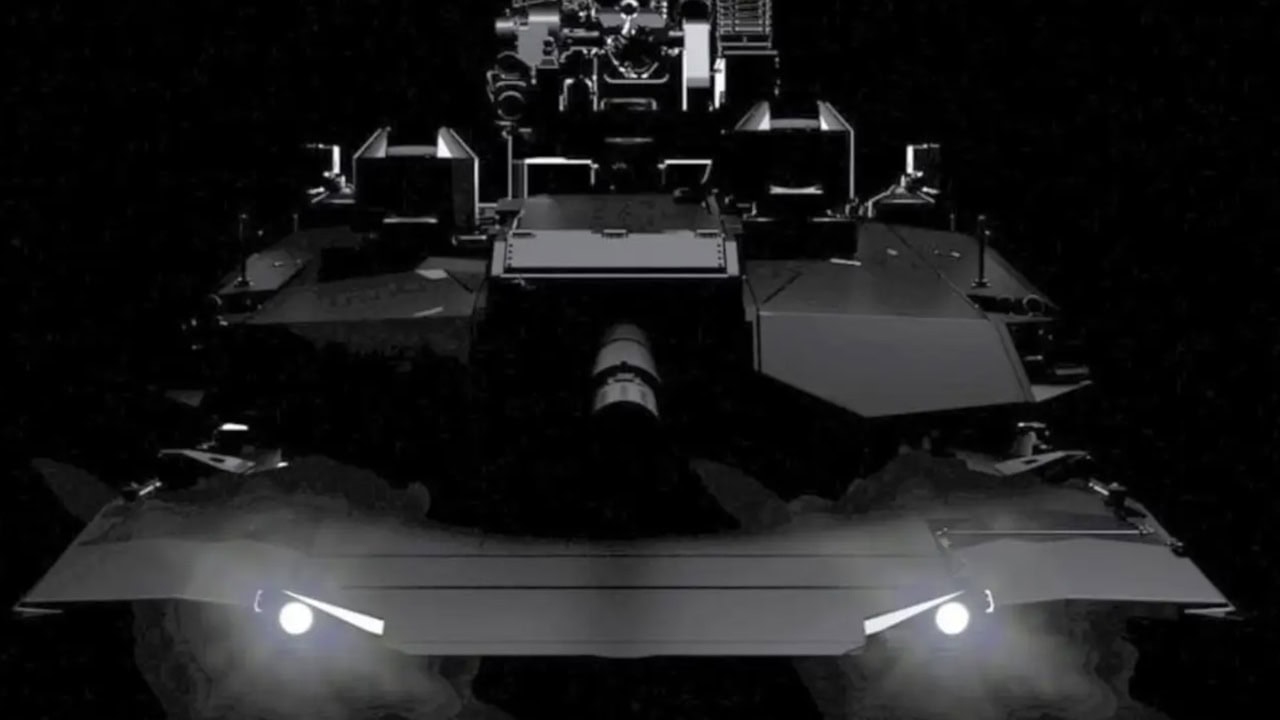The AbramsX is potentially the newest iteration of the M1 Abrams. While the tank is still a tech demonstrator and no orders have been placed for it yet, General Dynamics claims that the tank is ready at any time.
While the program promises to revolutionize the American tank fleet, there are still questions about how the tank will actually perform in combat against enemy tanks. Today, let’s compare the AbramsX to one of its potential adversaries, the Russian T-80BVM, and see how the AbramsX compares.
AbramsX: The Latest American Tank vs the Last Soviet Tank
The AbramsX is a next-generation tech demonstrator designed by General Dynamics Land Systems (GDLS). It was first showcased in 2022 at the Association of United States Army (AUSA) defense exhibition.
The tank is designed to be the next generation of the M1 Abrams and serve as the U.S. Army’s newest MBT. It sports a number of advanced features such as an unmanned turret with an autoloader system, AI assistant systems, drone launching capabilities, and other new technologies. The tank builds upon the legacy of the M1 and makes a number of improvements.
The T-80 was the last MBT developed and produced by the USSR before its collapse. It features many similar design elements from its siblings, the T-64 and T-72. It sports a low profile with a carousel autoloader similar to that in the T-64, reducing the crew size to three members: a driver, a gunner, and a commander.
The T-80BVM is a modernized version of the T-80BV and is the most recent iteration of the T-80. The T-80BVM upgrade program began in the early 2010s, and the tank was first publicly revealed in 2017.
The T-80 was thought to be a dead end until tank manufacturer Uralvagonzavod announced the continuation of serial production of new T-80 chassis in 2023.
Mobility
In terms of mobility, the AbramsX is designed to be lighter and more agile than its predecessors, weighing approximately 60 tons compared to the 68 tons of the M1A2 Abrams. This reduction in weight significantly enhances its mobility, allowing it to navigate bridges and critical passageways more effectively.
The AbramsX ditches the gas turbine and now features a hybrid diesel-electric engine, which improves fuel efficiency and enables a quiet-running mode. It can reportedly reach speeds of up to 45 mph on roads, making it one of the fastest tanks in the world.
The T-80BVM, on the other hand, retains the GTD-1250 gas turbine engine of its predecessors, which provides around 1,250 horsepower. It has a power-to-weight ratio of around 23.5 horsepower per ton. Weighing only 46 tons, the T-80 can achieve speeds of up to 70 km/h (43 mph) on roads.
Like most other Soviet models, the T-80 was designed to have a low profile to make it harder to detect and hit. While this design philosophy is now outdated, the T-80’s smaller design makes it logistically easier to transport by rail, and it is better suited for muddy conditions than heavier tanks.
Firepower
In terms of firepower, the AbramsX is equipped with a new generation 120mm gun, potentially based on the XM-360 Future Combat System. This gun can fire a variety of advanced munitions, including Mid-Range Munitions (MRM), Advanced Multi-Purpose (AMP), and Advanced Kinetic Energy (AKE) shells. The tank also features an automatic loading system, optimizing the handling and firing of these munitions. Additionally, the AbramsX includes a remotely operated weapon station with a 30mm automatic cannon and a 7.62mm coaxial machine gun.

T-80 Tank. Image Credit: Creative Commons.
Despite its age, the T-80 still packs a punch. The tank is armed with a 125mm 2A46M-4 smoothbore gun, capable of firing armor-piercing fin-stabilized discarding sabot (APFSDS), high-explosive anti-tank (HEAT), and high-explosive fragmentation (HE-FRAG) rounds.
The gun can also fire 9M119M Refleks (AT-11 Sniper) anti-tank guided missiles, which have a range of up to 5 kilometers and can engage low-flying helicopters. The tank’s secondary armament includes a coaxial 7.62mm PKT machine gun and a 12.7mm NSVT anti-aircraft machine gun mounted on the turret roof.
Protection
The AbramsX incorporates advanced protection systems to ensure crew safety and tank survivability. It features an unmanned turret, which places the three-man crew at the front of the hull. This design enhances crew protection by reducing their exposure to direct hits.
The tank can be equipped with the Trophy active protection system, which intercepts incoming projectiles before they can hit the tank. Additionally, the AbramsX includes 360-degree thermal sights, an AI-enhanced command and control system, and advanced sensor data processing and integration.
The T-80BVM also boasts significant protective features. Its hull and turret are designed with angular armor, increasing the effective thickness and deflecting incoming projectiles. The tank is equipped with Relikt explosive reactive armor (ERA), which provides enhanced protection against modern anti-tank weapons. The T-80BVM also includes smoke grenade dischargers and laser warning systems to obscure the tank’s position during combat. Furthermore, the tank’s latest variants deployed in Ukraine are equipped with anti-UAV armor and counter-drone solutions.
Conclusion
Unsurprisingly, the AbramsX is superior in just about every way. Attentive readers may have noticed that I left out other comparisons like fire control systems, internal electronics, etc. That is because I don’t feel the need to point out that the AbramsX is obviously superior in these areas as well.

T-80BVM ‘Bunny’ Tank. Image Credit: Creative Commons.
The T-80BVM is still a good tank in its own right. Despite its checkered history, the T-80 retains some design aspects that are superior to other Soviet models, namely its engine. That said, the T-80 is still a tank from the early 80s, designed by a superpower that no longer exists, in an environment that has since changed.
About the Author:
Isaac Seitz, a 19FortyFive Defense Columnist, graduated from Patrick Henry College’s Strategic Intelligence and National Security program. He has also studied Russian at Middlebury Language Schools and has worked as an intelligence Analyst in the private sector.

